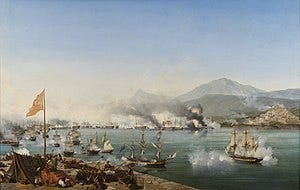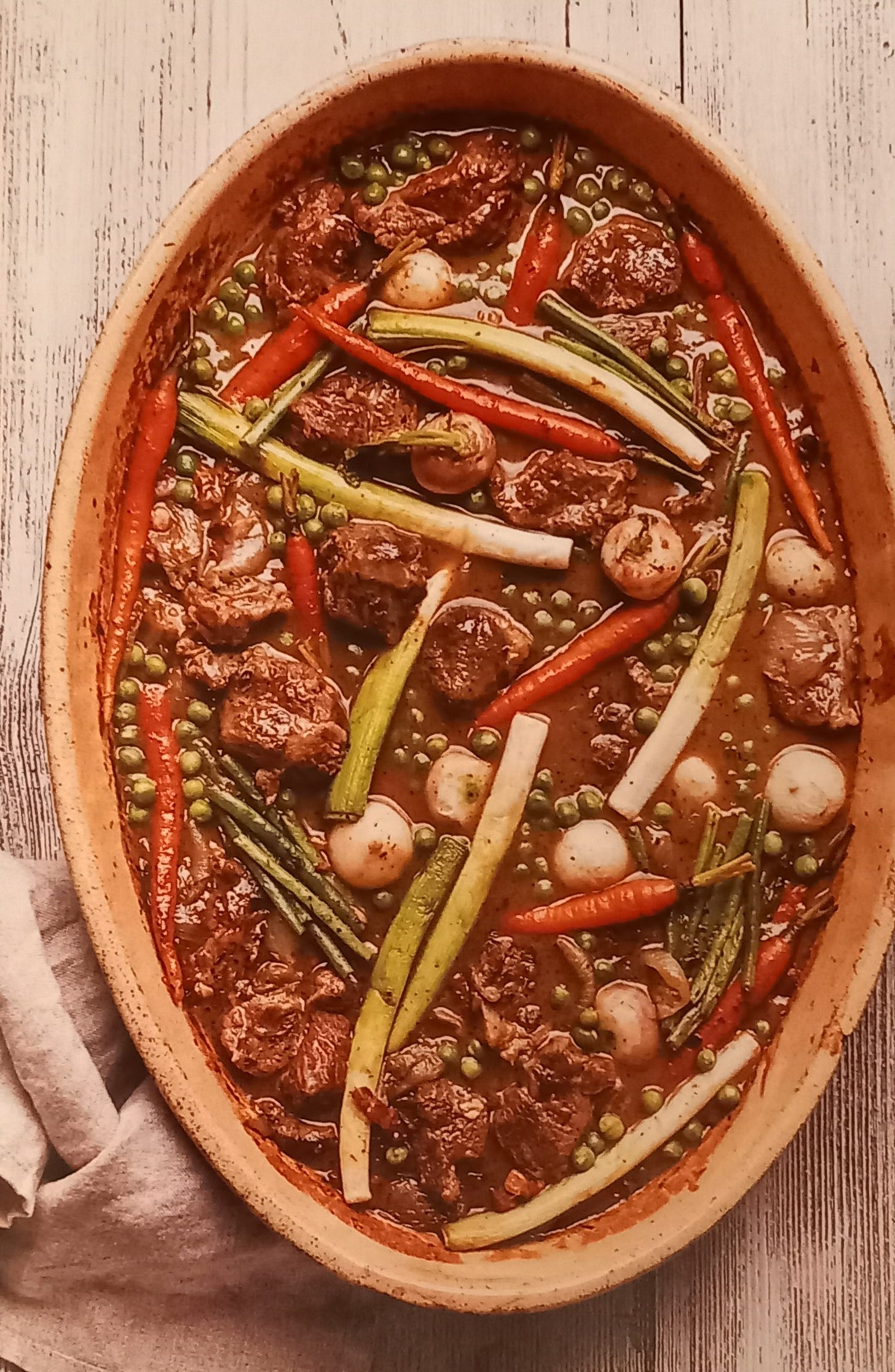Religious or national festivals bring with them very specific menus it can be a mistake to deviate from. While it’s relatively acceptable at Christmas to swop the turkey for a capon or goose, or even a decadent celebratory lobster (but keep your subversive rib roast private), you certainly couldn’t make any substitutions at Thanksgiving. Equally, the suggestion that the Easter lamb might be exchanged for another creature with its own Pascal links could prove deeply upsetting. It’s the rabbit that, um, springs to mind, as it were. Delicious though it is, its bunny associations with Easter Sunday traditions make it an insensitive suggestion for a cooked alternative to the established roast lamb. Even a poussin, a little pretentious at other times of year, as an Easter chick would be only be provocative, and the consumption of either seasonally anthropormorphised creature almost cannibalistic.
In pagan times, spring was celebrated with rituals to the ancient German goddess of dawn and fertility, Eostre, who gave her name to ‘Easter’. The rabbit was her animal symbol, roped in with its high reproduction rates as a representation of fertility and new life, forever linked with the rituals of Easter and spring.
The decoration of eggs is believed to date back to at least the 13th century when what was being celebrated was not Easter so much as the spring equinox. The Easter Hare of 17th century German Protestants was the judge of children and whether or not they deserved an egg hunt, much as Santa Claus only dishes out presents to good children, though luckily for them, it appears from the swollen stockings and the mound of packages under the tree that all children universally are always good.
In the US, the tradition of Osterhase or Oschter Haws, the egg-laying hare, was brought to Pennsylvania by German immigrants in the 1700s, coloured and dyed eggs representing, like Eostre, renewal and fertility. For centuries, the eggs were those of ducks and hens, dyed with vegetable skins, roots, and charcoal.
Now that Easter eggs are no longer cold and hard-boiled lunch-box ova but made of seductive chocolate, Americans consume 3 billion of them.
It took two simple steps to get from fowl to chocolate. First, the Victorians created cardboard eggs, lavishly illustrated or covered in silks and lace, that they filled with chocolates and small presents. Then, in 19th century France and Germany, the original chocolate Easter eggs were created. In the UK, the first were made in 1873 in Bristol, produced by the Quaker chocolatier, J. S. Fry and his sons.
These days, according to Statista, Brits consume 80 million chocolate eggs and roughly 8000 calories in chocolate per head each Easter.
Lamb is a far less provocative subject. Symbolic across most of the western and middle eastern world of the arrival of spring and for Christians the focus of the Easter festival, it’s a meat we treat differently as the new season approaches, perhaps because the animal coming young to slaughter is tender and delicate in flavour. Arnáki frikassé, made with still milk-fed lamb, is a popular spring dish in Greece, a slow braise with young heads of Cos lettuce, spring onions and the new season’s dill, in an avgolemono egg-and-lemon sauce. It shuffles out autumn lamb with that season’s recipes for shanks, shoulders and legs with their potatoes, onions, dried beans or prunes and apricots too heavy once new grass is shooting and buds unfolding eagerly on barren branches.
This is the time of year for a Navarin printanier, a slow-braised stew that celebrates the arrival not just of young lamb but of the new growth of vegetables. Traditionally a country recipe common across France, it is sometimes thought to have been named in honour of France and her allies, following the defeat of the Ottoman Armada at the battle of Navarino. A naval battle fought on 20th October, 1827 in the Ionian Sea, it led, eventually, to the independence of those champion consumers of lamb, the Greeks.
But that is debatable: the earliest use of ‘Navarin Printanier’ comes through cookery writer and master chef Georges Escoffier, who wasn’t even born until 1847. Others say it’s named after ‘navets’, the baby turnips that generally participate in the dish unless you can’t bear the taste of them. (If you’re a Tabled regular, you’ll know Britain’s Environment Secretary, Thérèse Coffey, is a big fan.) Whatever is true, the Greek breaking on Easter Sunday of the Lenten meat-free fast with lamb rubbed in olive oil, spiked generously with needles of fresh rosemary, then gently roasted for hours alongside whole heads of garlic, will also provide a rewarding festival meal.
A Navarin of lamb, however, will see you all through spring, well beyond Easter. It’s a dish, to follow correctly French tradition, of neck chops (collets) cooked with a changing collection of spring’s new vegetables. Young turnips are a key component. You can leave them out if you loathe them, and give the dish a name of your own. Similarly, you can use chunks of de-boned shoulder of lamb instead of neck chops.
It’s only quite recently that lamb not mutton has been used for the recipe. Mutton is the meat of an adult sheep over two years old, less tender and requiring long, slow cooking. It’s a cheaper alternative to lamb and gives a far more pronounced and gamey flavour to any dish. Not until the beginning of the 20th century were sheep bred to grow and fatten in a shorter time period, for slaughtering in the lamb’s first year of life. Given that while agneau is the French for lamb, the French for ‘sheep’ is mouton, should you want to cook with mutton in France, you’d have to order ‘viande de mouton’ or, for a leg of mutton, un gigot de mouton, if you didn’t want to engage in a Monty Python-esque conversation with a confused butcher.
(You will be hard pressed to find mutton in Greece, or a Greek lamb that weighs more than 9 kg/20 lbs. The Greeks favour very baby lamb, preferably from Tinos or Naxos, where they feed on wild greens and herbs. If you find yourself at Easter on Folegandros or Astypalaia, you are a lucky bunny, so to speak. Lamb there is raised only for local consumption.)
In the UK, a sheep between one and two years old and therefore not qualifying as mutton, is known as a hogget, growing in popularity among the greed-erati. Its meat provides the texture of lamb but the stronger flavour of mutton. Both hogget and mutton can happily be used in a navarin printanier. But I’d go for lamb in order not to overwhelm the delicate flavours of the new season’s vegetables..
Whatever you use (and the wonderful food-and-travel writer of Around the World in 80 Scrapes would suggest none, denouncing the flavour of all lamb as ‘damp’), navarin is not an expensive dish, if you make it not with shoulder of lamb but with best end neck chops. The fat that these come with enriches the dish and if you make it a day ahead of serving it (strongly recommended), not only will the flavours mellow but you can easily spring the hardened lid of fat off the stew in chunks with the point of a teaspoon. With either cuts, making it ahead allows you to focus your time on the hunt for the Easter bunny’s chocolate eggs.
What vegetables you use in a Navarin Printanier depends, as its name suggests, on what is available so early in the year. The dish becomes a celebration of spring, containing as it can the first of the new season’s potatoes, peas, tiny carrots, baby leeks and baby turnips (which I prefer to add as close to the end of cooking as possible so that their flavour doesn’t overwhelm the rest).
.Serves 10-12
1.6kg/3.5lbs shoulder of lamb, deboned or 1.6kg/3.5lbs neck chops
200g/7oz of garlic cloves, peeled
350g/12oz small shallots, peeled and halved
10 anchovy fillets
1 tablespoon tomato paste
700ml/1½ pints white wine
1.5l/2.6 pints lamb or chicken stock
500g/1lb baby vegetables, such as baby new potatoes, baby turnips, leeks, baby carrots and fennel, trimmed and halved if necessary
10 baby turnips, cleaned and peeled
1 new carrot, peeled and cut into 2cm/¾in dice
150g/5¼ oz of canned haricot beans, cooked
1 bouquet garni
olive oil
parsley, roughly chopped
mint, finely chopped
Strip off any fat or sinew from the lamb shoulder and cut into 5-6cms/2-2½ ins pieces. Pour a good glug of olive oil into a large, heavy-bottomed pan and set over a high heat.
Add the lamb in batches and fry until evenly dark and golden in colour. Remove from the pan with a slotted spoon and set aside in a bowl, reserving the oil and fat
Reduce heat to medium. Add the garlic cloves and shallots and allow to caramelise. Once golden, add the anchovies and stir until dissolved. Add the herbs and tomato paste and stir a minute to cook then add the white wine. Reduce, stirring once in a while, by three-quarters.
Return the lamb to the pan, add the bouquet garni, and pour in enough stock to cover. Bring to the boil, then reduce the heat and simmer gently for 1½-2 hours. After 1 hour, add your chosen vegetables.
Once the lamb pieces are almost falling apart, remove them to a warm bowl, cover them to keep them warm, and raise the heat to medium-high and reduce the liquid by a quarter.
Strain the liquid into a clean pan, remove the bouquet garni and place the meat and vegetables in a warmed tureen and keep warm. Add the turnips, carrots and haricot beans to the liquid in the pan. Cook them at a gentle simmer for 5-8 minutes until tender then fold them and the liquid into the lamb.
Sprinkle over the parsley and mint and serve immediately.









Lamb always tastes damp to me. Can't abide the stuff!
Wonderful, Julia! Can't wait to make the navarin... In the US, the debate has been Pascal Lamb or Pascal Ham? Ham mostly won out as it was available and cheap. Lamb is more commonly eaten on the east coast but nearly impossible to find in many parts of the west! And that's a whole 'other story involving the 'sheep wars'...Thank you!